3D Reflection
The Reflection is a mirror image of the original object. We can differentiate 2D and 3D reflection by adding Z-axis. The Z-axis shows the depth of the surface. In the Reflection process, the size of the object does not change.
We can represent Reflection by using the following three ways-
- Reflection along with xy Plane: In the xy plane reflection, the value of z is negative.
x1 = x0
y1 = y0
z1 = -z0
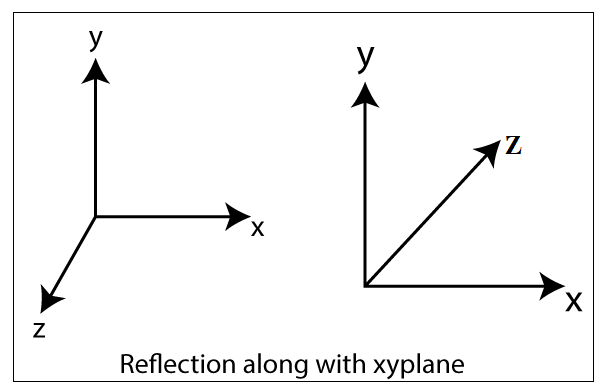
Matrix of 3D Reflection-
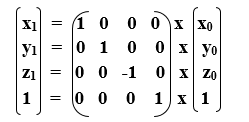
- Reflection along with xz Plane: In the xz plane reflection the value of y is negative.
x1 = x0
y1 = -y0
z1 = z0
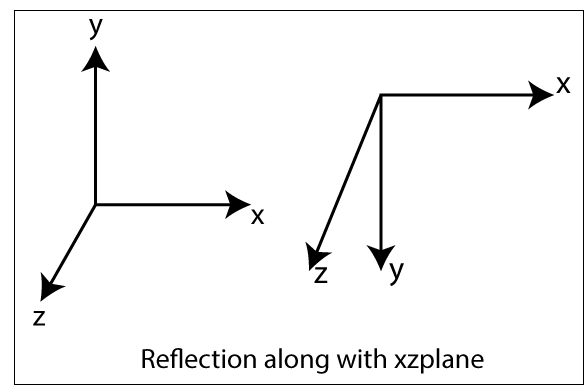
Matrix of 3D Reflection-
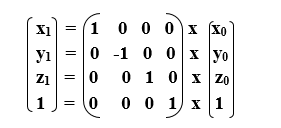
- Reflection along with yz Plane: In the yz plane reflection the value of x is negative.
x1 = -x0
y1 = y0
z1 = z0
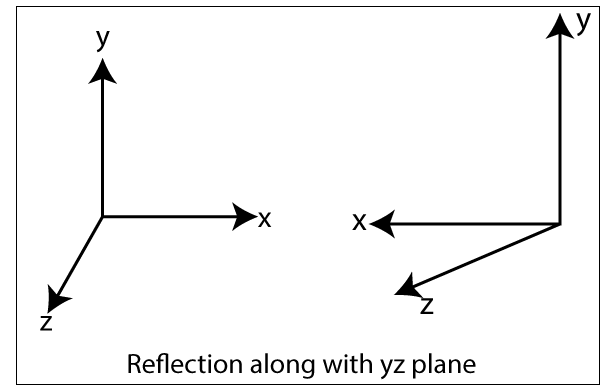
Matrix of 3D Reflection-
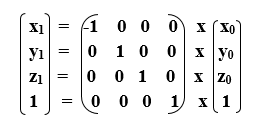
Example: A 3D triangle with coordinates points P (4, 5, 2), Q (7, 5, 3), R (6, 7, 4). Apply reflection on xy plane and find the new coordinates of triangle?
Solution: We have,
The initial coordinates of triangle = P (4, 5, 2), Q (7, 5, 3), R (6, 7, 4)
Reflection Plane = xy
Let the new coordinates of triangle = (x1, y1, z)
For Coordinate P (4, 5, 2)-
X1 = x0 = 4
y1 = y0 = 5
z1 = -z0= -2
The new coordinates = (4, 5, -2)
For Coordinate Q (7, 5, 3)-
X1 = x0 = 7
Y1 = y0 = 5
Z1 = -z0= -3
The new coordinates = (7, 5, -3)
For Coordinate P (6, 7, 4)-
X1 = x0 = 6
y1 = y0 = 7
z1 = -z0= -4
The new coordinates = (6, 7, 4)